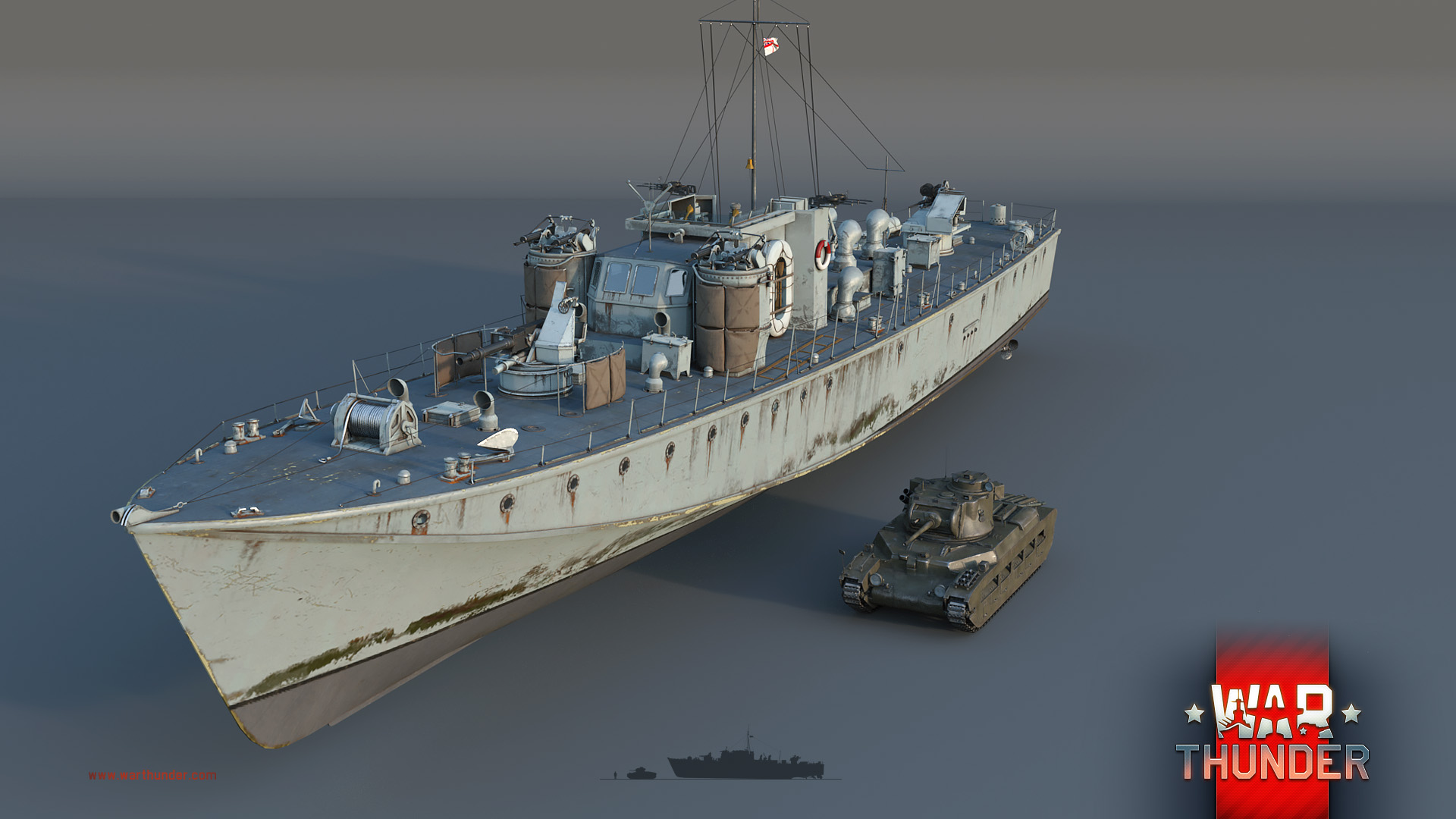The professed goal of Gaijin’s War Thunder has always been to include air, land and sea combat; it started with aircraft and added ground forces a while back, but there had been little word about naval units (apart from an aquatic April Fool’s aside). Nobody was sure how naval battles might work in War Thunder; the most obvious comparison would be to Wargaming’s Worlds of Tanks, Warplanes and Warships, the latter having launched last year. It’s rather fun, with destroyers, cruisers, battleships and aircraft carriers merrily lofting shells, torpedoes and aircraft at each other.
War Thunder is a slightly different beast, though, hewing a touch closer to realism. For Wargaming gameplay and balance come first (though with a firm historical basis; they invest in museums and employ a full-time consultant in Nicholas Moran); Gaijin try more to replicate the historical performance of vehicles (though still within the context of an action game, to a varying extent across the different modes, as opposed to a perfect recreation of historical events). Neither approach is inherently better, incidentally, regardless of the spittle-flecked ravings of mighty forum warriors on both sides. Large scale naval battles tended to be rather drawn-out affairs, so World of Warships speeds things up to keep the action going. Destroyers in particular zip around very nippily, though if you’re in one of the slower battleships before engine upgrades it can feel like you’re limping after the rest of your team wheezing “wait for me!”
War Thunder also features combined arms, players currently flying aircraft and driving tanks in the same battle, where Wargaming has kept the three Worlds Of… completely separate. That allows them to take a fairly abstract approach to aircraft carriers in WoWS, with squadrons/flights of aircraft acting as a single entity guided by the carrier captain.
Gaijin’s announcement last month revealed that, after internal testing showed the difficulties of player controlled capital ships in combined battles, they are taking a slightly different tack for their first naval units and focusing on smaller vessels: patrol boats, motor torpedo boats and such. Coastal units are often overlooked, both by navies themselves and naval historians, but they’re a really interesting part of the war. Rock Paper Shotgun’s Tim Stone mentioned Peter Markham Scott’s “The Battle of the Narrow Seas” in a column last year, a first hand account of British Coastal Forces originally published in 1945 and a fascinating read. The scale certainly makes sense for working alongside existing units in combined arms battles, so though some players are disappointed that they won’t get to set sail in massive battleships it’ll be most interesting to see how it all works out. Some wallpapers have just been released showing Gaijin’s customary attention to detail in modelling; this Fairmile D MGB looks rather splendid:
(Bonus soundtrack for anyone who has the post title stuck in their head)
